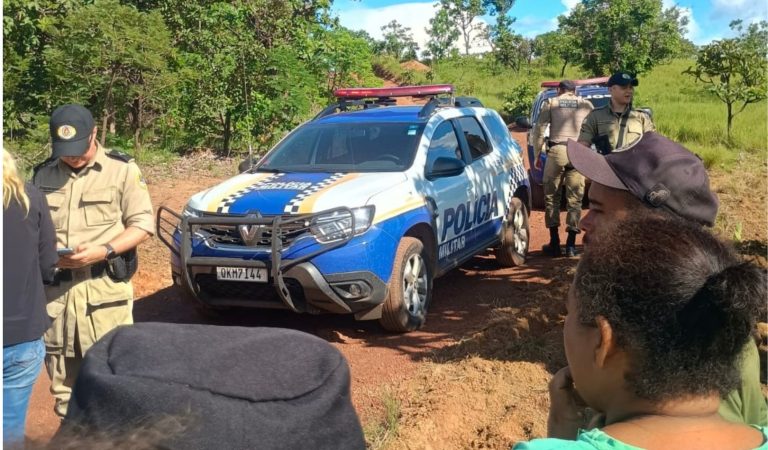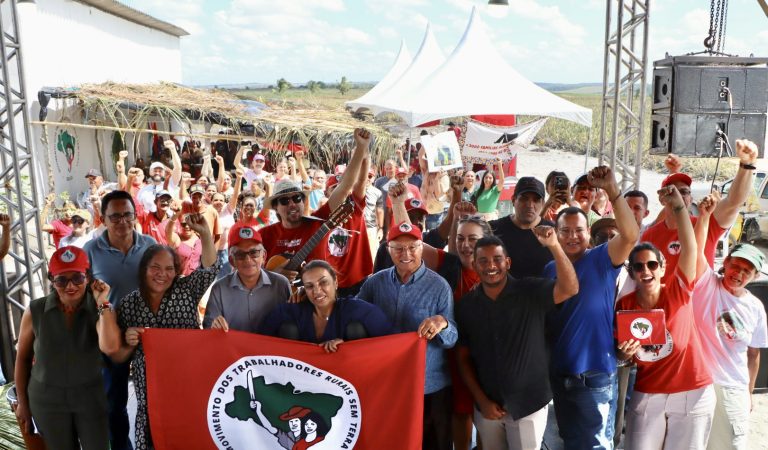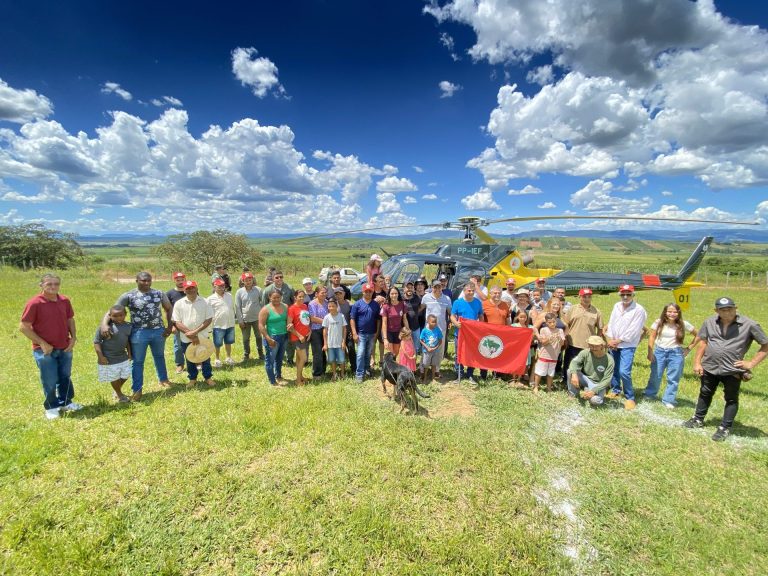How Landless Workers in Brazil Are Challenging Unequal Land Distribution and Corporate Agribusiness
Tricontinental: Institute for Social Research releases a new dossier on the struggle for land and popular agrarian reform in Brazil

From Tricontinental
Brazil is among the most unequal countries in the world when it comes to land distribution and is home to the world’s biggest landed estates. This structure of land concentration and unproductivity has historic roots dating back to Portuguese colonization, which established a foundation of social inequality in the country that persists today.
In Brazil – as elsewhere – the relationship with the land is fundamental for the country’s development. To talk about land is to talk not only about people, but also about the control of natural resources and of economic, social, and cultural development; land is an expression of society as a whole.
Tricontinental: Institute for Social Research dossier no. 27 “Popular Agrarian Reform and the Struggle for Land in Brazil” discusses the current stage of the struggle for land in the country. At the epicenter of this discussion is the contrast between two vastly different agricultural models: agribusiness versus agroecology. Key to the agroecological model is the concept of popular agrarian reform, which proposes the full-scale reorganisation of landholdings that goes far beyond democratizing access to land, challenging the hegemonic form of capital and presenting a different conception of and a model for agriculture and agrarian life.
In addition to discussing the debate over popular agrarian reform, which brings with it a new strategy of struggle against agribusiness, ‘Popular Agrarian Reform and the Struggle for Land in Brazil’ also provides an overview of the history of the struggle for land in Brazil, followed by a discussion of an agrarian reform settlement organised by the Movement of Rural Landless Workers (MST), which paints a concrete picture of a different conception of and model for agrarian life.
Read Tricontinental: Institute for Social Research’s new dossier, “Popular Agrarian Reform and the Struggle for Land in Brazil.”
Students of the school at the MST encampment Herdeiros da Terra. Image credit: Wellington Lenon.
“To talk about popular agrarian reform is to talk about hunger, which impacts 820 million people across the world, since agribusiness treats food as a commodity; it is to talk about the rapidly growing population in urban areas and its consequences – such as housing, mobility, and employment; and it is to talk about the climate debate, preserving the environment, and the poisoning of the earth, water, and food. In other words, agrarian reform and agroecology are the best equipped and most up to date approaches for the development of global agriculture.” – André Cardoso, Coordinator of Tricontinental: Institute for Social Research (São Paulo)
Key information from the dossier:
- According to the most recent census in Brazil (2017), the concentration of land in the hands of a small minority has increased: roughly 1% of landowners control almost 50% of the land in rural Brazil.
- Half of all rural landowners have holdings that are less than 10 hectares (a soccer field is about one hectare), but these holdings account for barely 2% of the total land. In other words, most holdings are enormous and are held by a small minority – the landowning elite.
- Today, agriculture in Brazil is dominated by agribusiness, which dominates enormous stretches of land cultivated based on the principles of monoculture. This model poisons nature, people, and animals with vast quantities of agrotoxins, leading Brazil to become the world’s largest consumer of agricultural poisons.
- Agricultural production in the agribusiness model is centered around the production of commodities for export, rather than for domestic consumption.
- In 1984, the Landless Workers’ Movement (Movimento dos Trabalhadores Rurais Sem Terra or MST) emerged out of experiences of resistance to the civic-military dictatorship (1964-1985) and to the landowners. The MST has three objectives at its core: the struggle for land, agrarian reform, and social transformation.
- Through land occupations, the MST questions the way in which land as private property is used to disenfranchise the majority of society and denounces the fact that land is not carrying out a ‘social function’ as prescribed by the post-dictatorship 1988 Constitution. Legally, all property must meet certain criteria, such as that it must be productive, it must respect environmental regulations, and it must follow labour legislation. If these criteria are not met, the land can be expropriated in the name of agrarian reform.
- As part of the struggle led by the MST, roughly 350,000 families have acquired land and an additional 80,000 families live in encampments spread throughout the country that are still struggling for their legal status.
- The model of popular agrarian reform promoted by the MST develops agroindustries in the countryside that are under the control of workers who live in cooperative settlements. This approach develops an economic model that distributes income and that allows people to remain in the countryside rather than be driven to urban areas out of necessity.
- This approach also refashions social relations – such as reconstructing gender relations and confronting machismo and homophobia – and demands access to education in rural areas at all levels.



